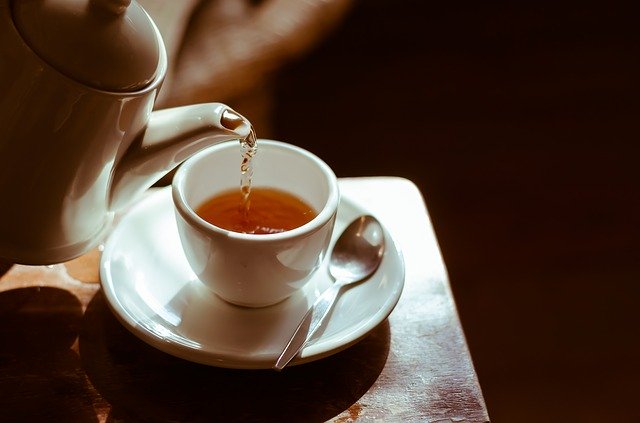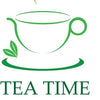
The Real Truth About Caffeine in Tea
Michele LillieHere at English Tealeaves, we often hear questions such as the following.

- “I’m beat; I need a pick-me-up. Which one of your teas has a good caffeine content?”
- “I don’t tolerate caffeine very well. Which one of your teas has the least caffeine?”
Unfortunately, these questions are not easy to answer. As our knowledge of tea cultivation, processing and brewing has increased, any generalizations about caffeine content in tea have become very murky.
There are only two answers we can give with any certainty.
- If you want to avoid caffeine, you cannot drink anything with tea leaves (from the Camellia Sinensis plant) in it. The only “tea” that has no caffeine is that made with herbs and/or fruits. In other words, infusions or tisanes. (Please note that there are a few herbs such as yerba mate and yaupon holly that do contain caffeine.)
- If you want real tea (made with leaves from the Camellia Sinensis plant) but want to minimize caffeine, we recommend decaffeinated tea. Brews made with these teas have very low caffeine but not zero.
Apart from these two statements, it is nearly impossible to direct you to teas with higher or lower caffeine content. The caffeine content of a cup of tea depends on a myriad of factors such as the age of the leaves, the variety of tea bush, how the tea bush was propagated, the amount of nitrogen fertilizer used, the growing season and the methods used in the processing of the tea. Here are some examples.
- It has been shown that green and black tea made from leaves plucked from the same bushes on the same day have virtually identical levels of caffeine.
- Green tea from a plant in Japan may have more caffeine than green tea from China.
- Younger tea leaves and buds tend to contain more caffeine than older leaves. Thus, teas made with these younger leaves such as a 1 flush Darjeeling or Silver Needles could have more caffeine than other teas.
- If you have read our Tea Primer, you will know that all tea comes from the Camellia Sinensis plant but there are two main varieties, the Sinensis variety and the Assamica The leaves of the latter variety tend to have more caffeine than those made from the Sinensis variety. As a result, our Assam teas may be higher in caffeine than some of our other black teas that are made from the leaves of the Sinensis variety.

In one of the most scholarly books about tea, the authors tested 30 teas brewed to very specific standards. In the list of the 10 teas with the highest caffeine concentration, there is one black tea, two pu-ers, five green, one oolong and one white. Among the 10 teas with the lowest caffeine are one black, five green, three oolongs and one white. That demonstrates how there is not much of a pattern when comparing types of tea with caffeine content.
In a 2008 study published in the Journal of Analytical Toxicology, the authors tested the caffeine content in 20 different teas. According to the results, they found “no observable trend in caffeine concentration due to the variety of tea.”
The way we brew tea also affects the amount of caffeine that is in the cup. Factors involved are the amount of tea leaves we use, the temperature of the water and the length of the brew. The more tea we use, the hotter the water and the longer we brew it, the more caffeine will be in the cup.
Another myth is that if you do a quick brew of about 30 seconds, throw that brew away and brew the leaves again, you will have produced a decaffeinated tea. Studies have shown that less than 10% of the caffeine is removed in a 30-second brew. It would take over 5 minutes to remove 80% of the caffeine and over 15 minutes to remove all of it. The problem is that it would also remove all the flavor, making the subsequent brew unpalatable.
Tea is a unique beverage in that it claims to be able to relax us as it also sharpens our mind and focus. How can this be? It can certainly not be explained by caffeine alone.

Let’s contrast coffee and tea and how caffeine affects our bodies. Although the caffeine is identical in coffee and tea, in the latter it combines with polyphenols/tannins. This results in the caffeine being absorbed into our bodies more slowly over a longer period. Thus, the effects of caffeine last longer and are more regular. The effect is that tea can sharpen the mind, increase concentration and lessen fatigue. In contrast, in coffee caffeine is an excitant, causing a direct increase in heart rate and a jittery feeling. Just one great reason for recommending tea over coffee!
Besides caffeine, tea does contain other stimulants. These include theine, theobromine and theophylline. On the other side, tea also contains L-theanine, an amino acid that has calming and relaxing properties.
Recent studies seem to indicate that this combination of caffeine and L-theanine is successful in helping one focus. These randomized controlled studies have shown that tea consumption can help with attention & alertness. It is felt that this is due to consumption of a high dose of L-theanine and lower levels of caffeine together. Also, because L-theanine reduces cortisol response to acute stress in humans, it is felt that tea consumption is an optimal beverage during times of elevated stress and burnout.
If all of that isn’t enough to make you run into English Tealeaves to enjoy your favorite tea, then we hope that just the deliciousness of a cup of wonderful tea will!